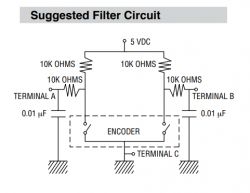>>21454979 Registering there is cool. I created an account there for yoradio. I also have the files but have not used them for yoradio as I have it built on VS1053b.

Czy wolisz polską wersję strony elektroda?
Nie, dziękuję Przekieruj mnie tamrobgold wrote:.I can see that as many people as many different needs and ideas. There is an option on the remote control to skip station by station. However, on the radio it is good how there is a list because in 99 stations moving with a step of +1 can be slightly tiring. We will probably leave it as it is. Only in my version for the housing of the finished tuner I will leave it in the option with priority "volume" because something feels that in a moment a small TPA from TI will fly there and make an amplifier and then the volume control is a priority
 .
.
robgold wrote:.I'd better buy a good branded encoder at TME.
robgold wrote:These are (unfortunately) the effects of the "Arduino generation". Someone didn't "grasp" that an encoder has outputs A,B and works in Gray code. So they contrived to call one output Data and the other Clock. This was followed by the creation of such blow-ups, ready-made libraries. The world of off-the-shelf modules is full of such "flowers".
robgold wrote:I would like to have my compilation.
Radio Spin (320kbps): https://s01.radiospin.pl/spin/robgold wrote:.@hevet
...and I downloaded these libraries ...and even uploaded....i.... how all these FLAC stations suddenly work WITHOUT any problems...well that's a "mess" because you will probably have to think about the SPDIF/Toslink output now I knew that this configuration is a bottleneck because the author of the audio library writes about it but I didn't expect as much. It doesn't matter if the audio.loop dares us in a higher priority shuffle or in the main loop. It works in both cases. The limitation starts at stations transmitting 2500kbps
